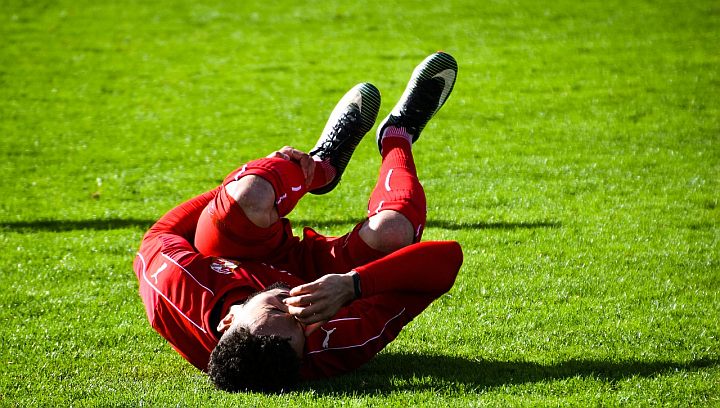If youŌĆÖve never participated in a sport, then youŌĆÖre missing out. There are so many upsides from improved health to team building, that some experts encourage kids and adults to play ball or hit the court on a regular basis.

The one downside of sports is the potential for injury. In fact, injuries are so common that sports injury therapy┬Āis a medical specialty all its own. But that shouldnŌĆÖt scare you away from getting involved. Many of the most common injuries can be fully corrected and even avoided when you play it safe.
Broken Bones
Broken bones, also known as fractures, are a very common occurrence in everyday life, not just in sports. According to the American Academy of Orthopaedic Surgeons, approximately 6.8 million broken bones are treated in the U.S. each year. Bones are extremely durable for the most part, but they can only bend so much. When enough pressure is applied the bone canŌĆÖt take the force and breaks.
Sometimes if a bone break is particularly bad or occurs around a flex point, surgery is needed. A good example of this is broken wrist surgery┬Āto avoid serious complications in the future. Broken wrists are the most common fracture in people under 75 years old. Surgery is needed, especially in children and teens, to ensure the wrist bones set correctly.
How to Avoid Broken Bones in Sports:
Wear protective gear, and wear it properly. That means making sure itŌĆÖs the right size and is worn according to the manufacturerŌĆÖs instructions. Also, avoid unnecessary contact whenever possible.
Muscle and Ligament Tears
There are over 650 muscles in the body and hundreds of ligaments. While they have fantastic flexibility, muscles and ligaments have their limitations. Over time, if muscles and ligaments are repeatedly stretched to their limits (i.e. overuse) or the muscle is used improperly, they can tear.
Ligaments and muscles in the knees are particularly prone to tears due to overextension while playing sports. Anterior cruciate ligament (ACL) and medial collateral ligament (MCL) are two of the most common sports-related injuries.
How to Avoid Muscle and Ligament Tears in Sports:
Warm up stretches are an absolute must no matter what sport you participate in. And if youŌĆÖre suffered previous injuries itŌĆÖs important to follow through with physical therapy to ensure the muscles and ligaments have fully recovered before you get back in the game.
Sprains
One of the less severe, but still very painful, injuries associated with sports is sprains. This is when ligaments are pulled and overstretched but not enough to fully tear. It happens when athletes twist the wrong way, fall or suffer a blow that forces the joint near the ligament out of its normal position.
Sprains and strains can happen virtually anywhere in the body, but they are most common in the shoulders, wrists, knees, and ankles. The most common treatment for sprains is RICE: rest, ice, compression and elevation.
How to Avoid Sprains in Sports:
Just as with muscle and ligament tears, stretching and warming up before physical activity can help prevent sprains.
Concussions
WeŌĆÖve all heard the concerning news reports about sports-related concussions that have come out in recent years. After years of research, doctors are beginning to get a better understanding of how much damage concussions can do to the brain both in the short-term and long-term.
Contact sports (football, soccer, rugby) come with a substantial risk of concussions. The real concern is suffering repeated concussions (or head hits that donŌĆÖt lead to a concussion), which can increase the long-term risk of Chronic Traumatic Encephalopathy (CTE). Unfortunately, there isnŌĆÖt much that can be done to treat concussions outside of rest to make sure the brain fully recuperates.
How to Avoid Concussions in Sports:
Again, wearing protective equipment is extremely important. Athletes should also avoid making contact with their head whether itŌĆÖs with a ball or other players. Research has shown that repeated headers in soccer increase a playerŌĆÖs risk for concussions. Play it safe and use another part of your body.
Just remember, injuries are always a risk in any sports activity, but keeping yourself physically fit can actually reduce your chance of injury and helps support overall health. Pay attention to your body and donŌĆÖt push yourself too far to avoid overexertion and prevent yourself from being sidelined.┬Ā



Leave a Reply